

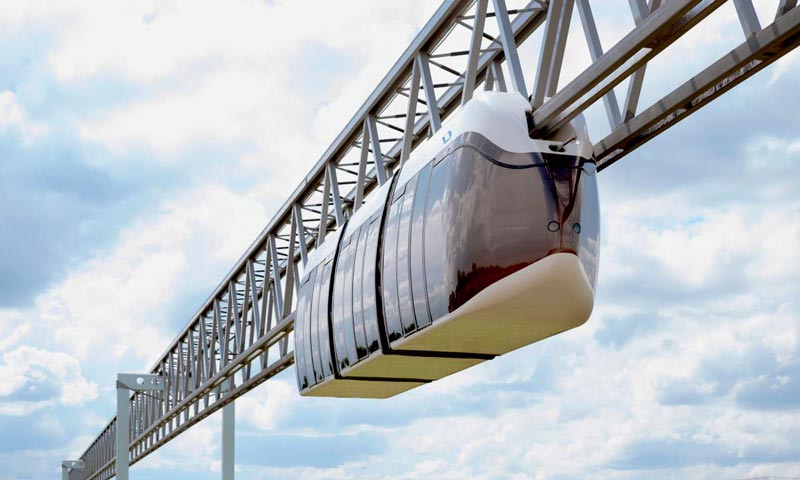
An important component of safe and economical transportation is a durable and reliable transport system. The more resistant its elements are to external influences and wear, the lower the maintenance and repair costs, as well as inconveniences for users. A long service life is an important argument in favor of choosing a particular solution. Our material will explain what prevents transport systems from remaining durable and how these problems are solved in uST complexes.
Cable cars have low resistance to wear. Unlike rail systems, where trains move along durable steel tracks, cable cars’ wheels roll directly on the supporting ropes, creating the friction that weakens the cables structure. In addition, they are vulnerable to external factors, such as precipitation, strong winds, and low temperatures, which accelerate the wear and corrosion of steel structures. Even with regular maintenance and lubrication, ropes wear out faster than rail systems. As a result, a complete rope replacement is needed every 6-8 years.
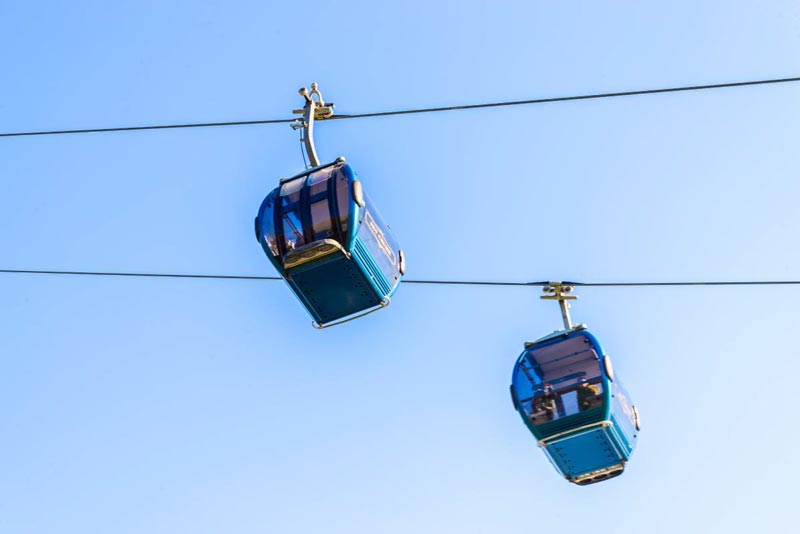
The cable car requires regular replacement of cables. Photo: freepik.com
In theory, the service life of a monorail track structure is 50 years, and the rolling stock lasts 10-15 years. However, in reality, things are more complicated. It's not easy to maintain a monorail and replace used parts on time due to the unique nature of each project and the variety of train types (suspended, mounted, contactless, magnetic cushion, etc.). Organizations that operate this transport face a shortage of spare parts. This was the case with the Moscow Monorail, which was launched in 2008 but already in 2017 began experiencing problems with wagon repairs. Trains began to run less frequently, and the track structure began to stand idle, because it is impossible to run a tram or subway train along one rail.
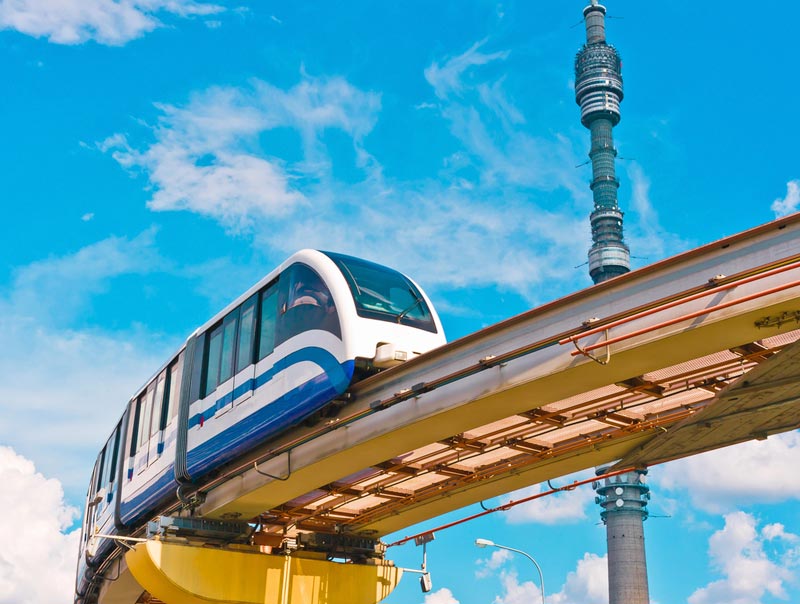
The monorail needs complex repairs. Photo: infotrans.by
The more traffic on a highway, the faster it will deteriorate. However, highways are affected not only by traffic volume, but also by natural conditions. For example, rainwater penetrates the pavement and remains there, freezing when it's cold, causing the asphalt to crack, and the coating quickly becomes unusable. If operating rules are followed carefully, the highway will be operational for 10 years. Major repairs can extend its lifespan by another five years.

The car body is damaged by anti-ice mixtures. Photo: freepik.com
Cars, buses, and trolleybuses traveling along these roads are prone to rust. Destruction is accelerated by temperature and humidity fluctuations, as well as impacts from pebbles, sand, and other abrasive materials. The car bodies are also harmed by salt and sand that is spread on roads in winter to prevent slipping. Under these conditions, a steel body can only last a few seasons, which explains why the lifespan of vehicles is typically only 10 years.
Repairs to tram tracks may need to be done every few years. The interaction of the wheel-rail pair, as well as uneven joints of the rails and their deformation, most noticeable at the acceleration and deceleration points, lead to the rapid destruction of the tracks and the adjacent roadway. With proper maintenance and timely repairs, the rails can last up to 10-15 years before needing to be replaced.
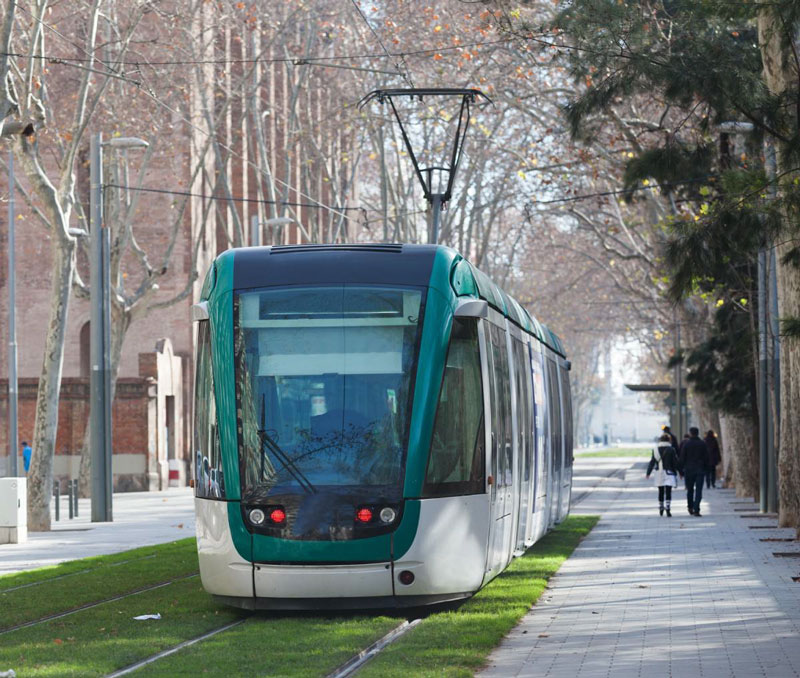
Tram rails and contact networks wear out quickly. Photo: freepik.com
The tram contact network also needs to be repaired or replaced more frequently, due to its vulnerability to external factors and mechanical damage. On average, the network has a lifespan of 7-10 years.
The uST string rail overpass has a minimum service life of 50 years before major repairs. This is thanks to a number of effective solutions.
The track structure located above ground is resistant to external influences: it will not be washed away by heavy rains and will not be destroyed by soil fluctuations. It is designed to withstand temperature fluctuations from -40 to +60 °C, and thanks to the prestressed structure it can withstand winds of up to 90 km/h and, in a special version, up to 250 km/h.
Galvanizing is used to protect the string rail elements from corrosion, while bolted joints are protected from moisture with special preservative compounds. The inside of the rail is filled with a special mixture that enhances the durability and corrosion resistance of the prestressed strings.
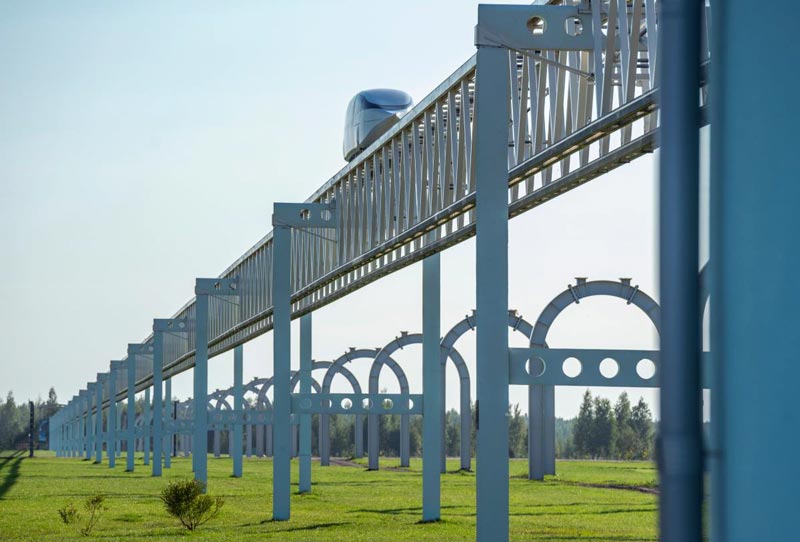
uST track structure will last at least 50 years
Unmanned electric rail vehicles wear out the coating minimally due to the use of an uncut track structure and a “cylindrical wheel – flat rail head” pair.
uPods can be operated safely and efficiently for at least 25 years. Composite, i.e. multicomponent, materials that protect the equipment from external influences and prevent premature wear are involved in the module cladding. Movement on the second level allows uST transport to avoid the destructive effects of deicing mixtures. uPods also use a drainage system to prevent water accumulation.
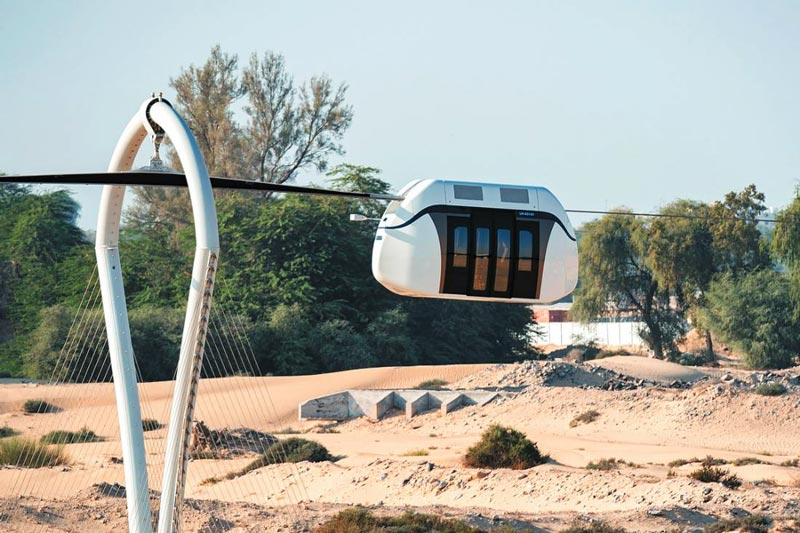
uPod is durable in any climatic conditions
As you can see, the uST complex will last longer than other transport alternatives. Meanwhile, its maintenance requires only a pre-trip inspection of the rolling stock, an interval inspection of the track structure by automatic devices, as well as testing of the automated control system and related subsystems. The engineering solutions used to create the complex will help to avoid unnecessary costs and ensure uninterrupted transportation over a long period of time.
This form asks for your consent to allow us to use your personal data for the reasons stated below. You should only sign it if you want to give us your consent.
Who are we?
The name of the organisation asking you for consent to use your information is:
Global Transport Investments
Trident Chambers, P.O. Box 146, Road Town
Tortola
British Virgin Islands
We would like to use the following information about you:
Why would we like to use your information?
Global Transport Investments would like to send this information to company registry, inform you about its news, for refund purposes.
What will we do with your information?
We store your name, address, ID Data, date of birth into company registry. We will share your e-mail & phone number with IT Service (https://digitalcontact.com/), SMS Center (http://smsc.ru). They will add your details to their mailing list and, when it is news update, they will send you an email or sms with details. We store your credit card number for possible refunds.
How to withdraw your consent
You can withdraw the consent you are giving on this form at any time. You can do this by writing to us at the above address, emailing us at the address: [email protected] or by clicking on the unsubscribe link at the bottom of emails you receive.
This privacy notice tells you about the information we collect from you when you sign up to receive our regular newsletter via our website. In collecting this information, we are acting as a data controller and, by law, we are required to provide you with information about us, about why and how we use your data, and about the rights you have over your data.
Who are we?
We are Global Transport Investments. Our address is Trident Chambers, P.O. Box 146, Road Town, Tortola, British Virgin Islands. You can contact us by post at the above address, by email at [email protected].
We are not required to have a data protection officer, so any enquiries about our use of your personal data should be addressed to the contact details above.
What personal data do we collect?
When you subscribe to our newsletter, we ask you for your name and your email address.
Why do we collect this information?
We will use your information to send you our newsletter, which contains information about our products.
We ask for your consent to do this, and we will only send you our newsletter for as long as you continue to consent.
What will we do with your information?
Your information is stored in our database and is shared with with IT Service (https://digitalcontact.com/), SMS Center (http://smsc.ru). It is not sent outside of the Euro. We will not use the information to make any automated decisions that might affect you.
How long do we keep your information for?
Your information is kept for as long as you continue to consent to receive our newsletter.
Your rights over your information
By law, you can ask us what information we hold about you, and you can ask us to correct it if it is inaccurate.
You can also ask for it to be erased and you can ask for us to give you a copy of the information.
You can also ask us to stop using your information – the simplest way to do this is to withdraw your consent, which you can do at any time, either by clicking the unsubscribe link at the end of any newsletter, or by emailing, writing us using the contact details above.
Your right to complain
If you have a complaint about our use of your information, you can contact the Information Commissioner’s Office.
Rate and Comment
You can assess the importance of a particular publication and the level of its preparation. Share your opinion in the comments!